China looked at putting a monitoring satellite in retrograde geostationary orbit via the moon
Thursday, 20 October 2022 14:33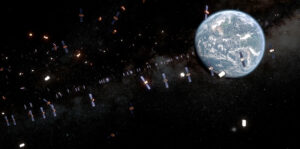
China appears to have considered boosting its space situational awareness capabilities by placing a satellite in a retrograde orbit out at the geostationary belt.
The post China looked at putting a monitoring satellite in retrograde geostationary orbit via the moon appeared first on SpaceNews.
Twin tail revealed in new Hubble image of Didymos-Dimorphos system following DART impact
Thursday, 20 October 2022 14:00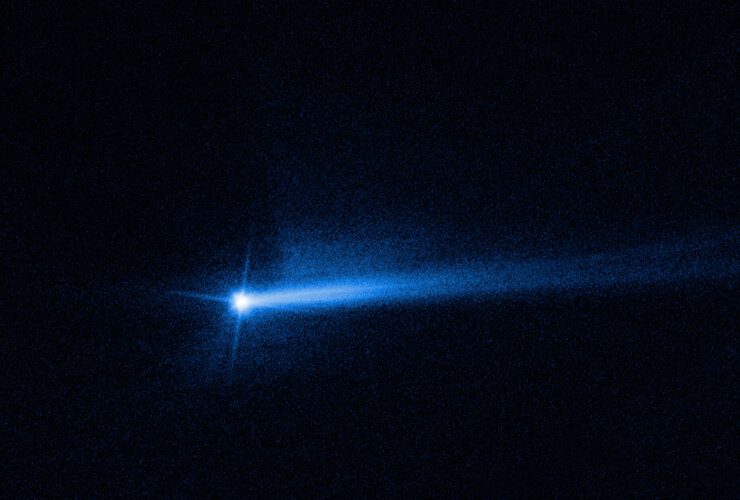 Image:
Hubble follow-up of DART impact
Image:
Hubble follow-up of DART impact Looking to move to a galaxy far, far away? An innovative system evaluates habitability of distant planets
Thursday, 20 October 2022 13:08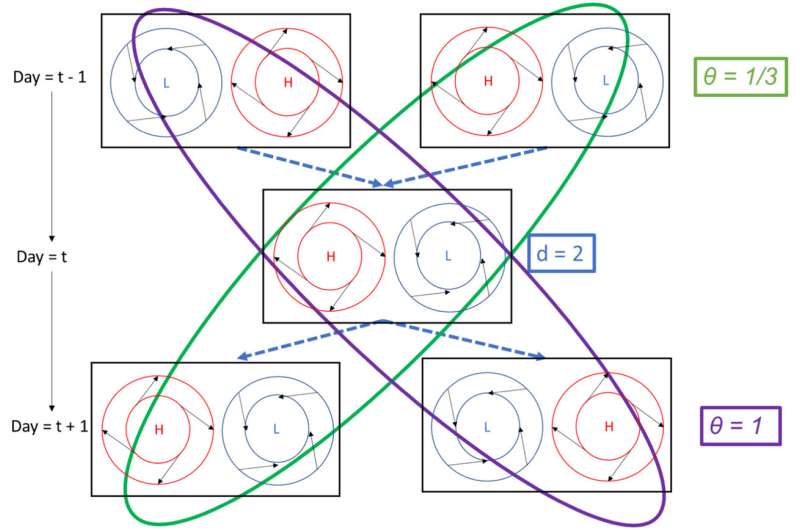
Webb uncovers dense cosmic knot in the early Universe
Thursday, 20 October 2022 13:00
Astronomers looking into the early Universe have made a surprising discovery using the NASA/ESA/CSA James Webb Space Telescope. Webb’s spectroscopic capabilities, combined with its infrared sensitivity, have uncovered a cluster of massive galaxies in the process of formation around an extremely red quasar. The result will expand our understanding of how galaxies in the early Universe coalesced into the cosmic web we see today.
European Space Agency to launch two missions on SpaceX rockets
Thursday, 20 October 2022 12:46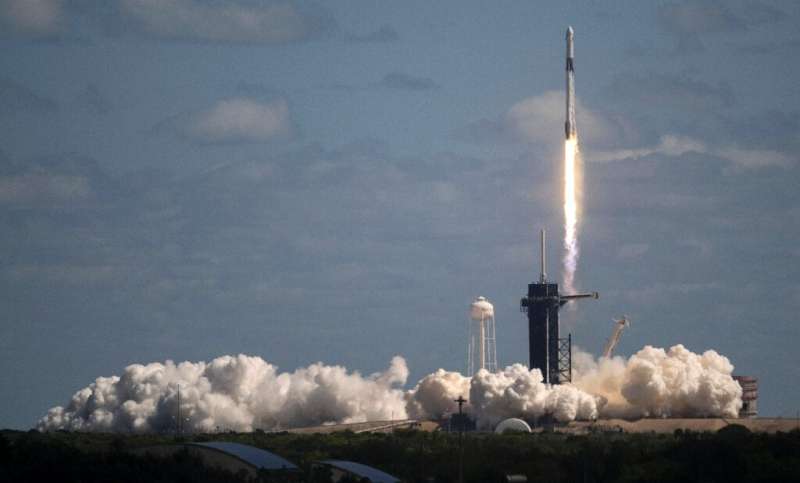
The European Space Agency announced Thursday it will use SpaceX's Falcon 9 rockets to launch two scientific missions because of delays to its own Ariane 6 rocket and the cancellation of flights on Russia's Soyuz launchers.
The ESA's space telescope Euclid had been planned to launch next year on a Soyuz rocket, but in February Russia pulled out in response to European sanctions over Moscow's war in Ukraine.
Euclid, which aims to better understand the mysteries of dark energy and dark matter, will now instead catch a ride into space on the Falcon 9 rocket of billionaire Elon Musk's US company SpaceX.
The ESA's Hera mission, which will probe the Didymos asteroid that NASA successfully knocked off course in September by smashing the DART spacecraft into it, will launch on a Falcon 9 in late 2024, ESA director general Josef Aschbacher said.
ESA moves two missions to Falcon 9
Thursday, 20 October 2022 12:09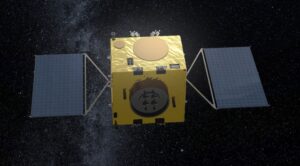
The European Space Agency now plans to launch a space telescope and an asteroid mission on Falcon 9 rockets because of its loss of access to Soyuz vehicles and delays in the introduction of the Ariane 6.
Ariane-6 stands tall on its launch pad
Thursday, 20 October 2022 11:40 The Ariane 6 launch pad at Europe's Spaceport in French Guiana now hosts for the first time a fully assembled example of ESA's new heavy-lift rocket, following the addition of an upper composite to the core stage and four boosters already in place. The upper composite - consisting of two half-fairings and a payload mock-up with the structural adapter needed to join it to the core stage - made th
The Ariane 6 launch pad at Europe's Spaceport in French Guiana now hosts for the first time a fully assembled example of ESA's new heavy-lift rocket, following the addition of an upper composite to the core stage and four boosters already in place. The upper composite - consisting of two half-fairings and a payload mock-up with the structural adapter needed to join it to the core stage - made th NASA to resume spacewalks after investigation into 'close call'
Thursday, 20 October 2022 11:40 NASA has approved resumption of routine spacewalks outside the International Space Station after a seven-month pause and after finishing an October flight readiness review.
The review was the last step in an investigation into a "close call" on a spacewalk in March.
Three spacewalks are planned, beginning sometime in mid-November, to work on installation of roll out solar arrays
NASA has approved resumption of routine spacewalks outside the International Space Station after a seven-month pause and after finishing an October flight readiness review.
The review was the last step in an investigation into a "close call" on a spacewalk in March.
Three spacewalks are planned, beginning sometime in mid-November, to work on installation of roll out solar arrays How scientist monitored and early warned potential hazardous near-earth asteroids
Thursday, 20 October 2022 11:40 An enormous number of near-Earth asteroid (NEA) orbit around the Sun, and among them 2072 NEAs, which are recorded in the Minor Planet Center (MPC) database, belong to the class of potential hazardous near-Earth asteroids (PHAs). These PHAs frequently make close approaches to Earth's orbit, and therefore, the hazard caused by PHAs is still a very real and ever-present threat. Faced with potentia
An enormous number of near-Earth asteroid (NEA) orbit around the Sun, and among them 2072 NEAs, which are recorded in the Minor Planet Center (MPC) database, belong to the class of potential hazardous near-Earth asteroids (PHAs). These PHAs frequently make close approaches to Earth's orbit, and therefore, the hazard caused by PHAs is still a very real and ever-present threat. Faced with potentia Curiosity reaches long-awaited salty region on Martian mountainside
Thursday, 20 October 2022 11:40 After journeying this summer through a narrow, sand-lined pass, NASA's Curiosity Mars rover recently arrived in the "sulfate-bearing unit," a long-sought region of Mount Sharp enriched with salty minerals.
Scientists hypothesize that billions of years ago, streams, and ponds left behind the minerals as the water dried up. Assuming the hypothesis is correct, these minerals offer tantalizing
After journeying this summer through a narrow, sand-lined pass, NASA's Curiosity Mars rover recently arrived in the "sulfate-bearing unit," a long-sought region of Mount Sharp enriched with salty minerals.
Scientists hypothesize that billions of years ago, streams, and ponds left behind the minerals as the water dried up. Assuming the hypothesis is correct, these minerals offer tantalizing ARCA Space launches the AMiE crypto coin
Thursday, 20 October 2022 11:40 ARCA Space started the first sale for the AMi Exploration (AMiE) utility token, issued in the Avalanche blockchain. For this first sale ARCA Space made available 675,676 tokens from the total of 1 billion issued. The regular price of one token is $0,1, and for this first sale the price is $0,075. The AMiE Token could be purchased with the USDt native token in the Avalanche blockchain.
The
ARCA Space started the first sale for the AMi Exploration (AMiE) utility token, issued in the Avalanche blockchain. For this first sale ARCA Space made available 675,676 tokens from the total of 1 billion issued. The regular price of one token is $0,1, and for this first sale the price is $0,075. The AMiE Token could be purchased with the USDt native token in the Avalanche blockchain.
The Celebrating committed orders for over 200 Astra spacecraft engines
Thursday, 20 October 2022 11:40 Astra celebrates cumulative committed orders for more than 200 engines and two full programs of Astra Spacecraft Enginesalready delivered.
"I'm thrilled that Astra has achieved both milestones: over 200 engines ordered and delivery of two full programs," said Chris Kemp, Founder, Chairman, and CEO of Astra, "Thank you to our customers for their confidence in our team and products, and cong
Astra celebrates cumulative committed orders for more than 200 engines and two full programs of Astra Spacecraft Enginesalready delivered.
"I'm thrilled that Astra has achieved both milestones: over 200 engines ordered and delivery of two full programs," said Chris Kemp, Founder, Chairman, and CEO of Astra, "Thank you to our customers for their confidence in our team and products, and cong Method for decoding asteroid interiors could help aim asteroid-deflecting missions
Thursday, 20 October 2022 11:40 NASA hit a bullseye in late September with DART, the Double Asteroid Redirection Test, which flew a spacecraft straight at the heart of a nearby asteroid. The one-way kamikaze mission smashed into the stadium-sized space rock and successfully reset the asteroid's orbit. DART was the first test of a planetary defense strategy, demonstrating that scientists could potentially deflect an asteroid he
NASA hit a bullseye in late September with DART, the Double Asteroid Redirection Test, which flew a spacecraft straight at the heart of a nearby asteroid. The one-way kamikaze mission smashed into the stadium-sized space rock and successfully reset the asteroid's orbit. DART was the first test of a planetary defense strategy, demonstrating that scientists could potentially deflect an asteroid he SwRI scientists compile Cassini's unique observations of Saturn's rings
Thursday, 20 October 2022 11:40 Southwest Research Institute scientists have compiled 41 solar occultation observations of Saturn's rings from the Cassini mission. The compilation, published recently in the scientific journal Icarus, will inform future investigations of the particle size distribution and composition of Saturn's rings, key elements to understanding their formation and evolution.
"For nearly two decades, N
Southwest Research Institute scientists have compiled 41 solar occultation observations of Saturn's rings from the Cassini mission. The compilation, published recently in the scientific journal Icarus, will inform future investigations of the particle size distribution and composition of Saturn's rings, key elements to understanding their formation and evolution.
"For nearly two decades, N Webb takes star-filled portrait of pillars of creation
Thursday, 20 October 2022 11:40 NASA's James Webb Space Telescope has captured a lush, highly detailed landscape - the iconic Pillars of Creation - where new stars are forming within dense clouds of gas and dust. The three-dimensional pillars look like majestic rock formations, but are far more permeable. These columns are made up of cool interstellar gas and dust that appear - at times - semi-transparent in near-infrared ligh
NASA's James Webb Space Telescope has captured a lush, highly detailed landscape - the iconic Pillars of Creation - where new stars are forming within dense clouds of gas and dust. The three-dimensional pillars look like majestic rock formations, but are far more permeable. These columns are made up of cool interstellar gas and dust that appear - at times - semi-transparent in near-infrared ligh 
